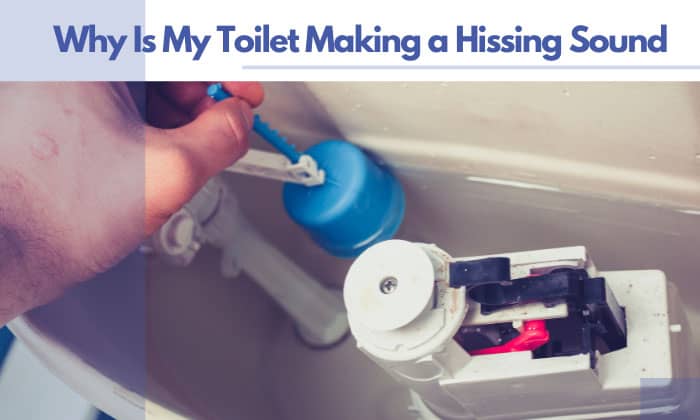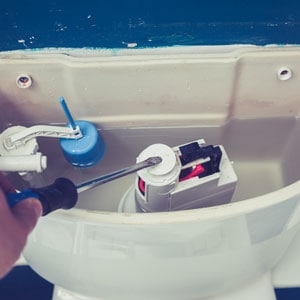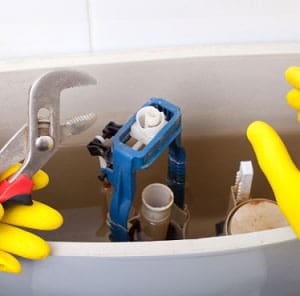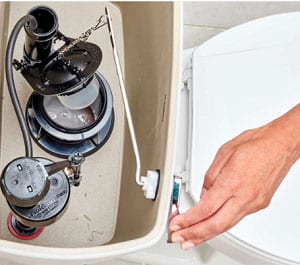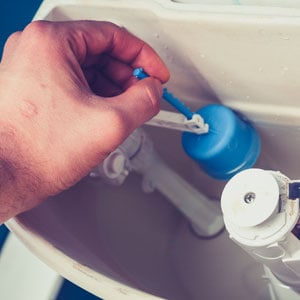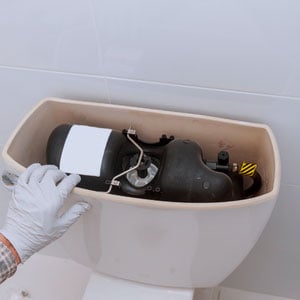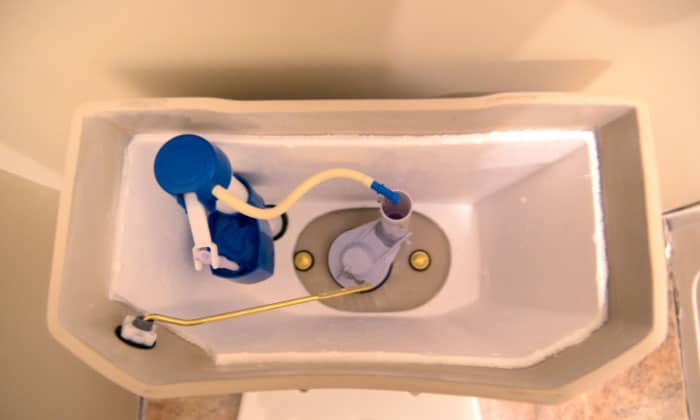Flushing the commode always makes a distinct sound of the water carrying the waste down the drain. But a hissing noise from the toilet even when not using it? That’s not normal.
To answer “Why is my toilet making a hissing sound?” It’s because of one of the following reasons: clogged fill valve, dirty or broken flapper, wrong length of the lift chain, float not working properly, and high water pressure.
5 Causes of Hissing Sound in the Toilet
A toilet hissing and gurgling can make our heads throb as we are facing another commode problem.
But before you call a plumber, check these solutions that can help you solve your toilet’s “sound issues” and save money from paying professional fees.
The fill valve is a component that refills the tank with water after a flushing cycle, and it’s also responsible for keeping the tank’s water at the recommended level. This valve opens when filling the tank and closes when done.
A toilet hissing after flush probably means a fill valve clogged with grime and debris. The clog is forcing the water to enter a restricted space, resulting in the sound and slow water refill.
This clog can also result in non-stop water running inside the tank received by the overflow tube causing a hissing sound from the toilet every few minutes and a potential leak.
To solve this, we need to do the following:
- Turn off the shut-off valve and flush to empty the tank.
- Remove the cap of the valve by pressing it down and then twisting it. If there are screws, remove them with a screwdriver.
- With the cap removed, cover the fill valve with a plastic cup or container.
- Turn on the shut-off valve for 10 seconds and let the water flush off the dirt and debris off the fill valve.
- Put the cap back into the fill valve.
If you still have the toilet fill valve hissing, replace the fill valve by referring to the steps in the 5th cause in this article.
The flapper opens when we flush, letting the water into the bowl. Once the flushing mechanism is done, the flapper closes tight in the seal. With this, a toilet hissing and filling slowly may be caused by the flapper not closing tightly as it should.
When the flapper doesn’t close completely, it allows water to leak and causes the toilet to randomly make noise.
To fix a hissing toilet of this cause, we need to do the following:
- Turn off the water supply valve, remove the lid, then and flush the toilet to drain the tank.
- Disconnect the lever chain from the flapper, and pull off the flapper from the mounting pegs of the overflow tube.
- Wash the flapper with mild dish wash to remove existing dirt or grime.
- Also, wash the seal with mild dish wash and wipe it; there should be no debris obstructing the seal so the flapper can close tightly.
- Take the flapper and attach it to the mounting pegs of the overflow tube.
- Attach the lever chain to the flapper; make sure that the length is not too long or short so the flapper will close properly.
You may turn on the shut-off valve again and start using the commode. If this didn’t stop the toilet from hissing, try replacing the flapper.
As we have mentioned earlier, a toilet making a hissing noise may be caused by an incorrect length of a toilet lever or lift chain.
When we flush the commode using the lever, it pulls the flapper up to let the water into the bowl. If it doesn’t close completely after the flushing mechanism, we may hear a hissing due to the water seeping into the bowl when the flapper is supposed to be closed.
It’s either the chain is too short to close the flapper, or it’s too long that the excess goes under the flapper or gets caught with the other tank parts.
To adjust the lift chain, do the following:
- Turn off the shut-off valve and drain the tank by flushing it.
- Check the end of the chain attached to the lever arm and adjust accordingly.
- The lever arm itself has holes where you can hook the chain to adjust it. Hooking the chain more to the left will shorten it.
The chain also has multiple slacks; you can choose which to hook to adjust the length. - Try different holes or slacks and test by pulling the lever; see if the flapper closes correctly on the current chain length.
If you have your toilet hissing but not leaking, then the problem could be the float. The toilet float (ball, cup, or floatless) helps manage the water in the tank; if it floats to a certain height, then the fill valve will stop refilling water.
If the float is compromised—a hole, for example—water will get into it and it will lose buoyancy. This signals the fill valve to continue refilling even though the tank is full, causing a hissing sound.
As a solution, we will share the steps for replacing the entire float assembly.
- Turn off the water supply valve and flush to drain the tank.
- Place a bucket under the supply valve hose and unscrew the latter from the toilet.
- Unscrew the lock nut of the float assembly below the tank with rib joint pliers.
- Pull out the old float assembly.
- Slide the tank gasket into the shank of the new assembly.
- Adjust the height of the assembly tube to suit the tank; we recommend ½ inch below the tank’s edge and aligned with the overflow tube.
- Insert the part of the tube that’s below the tank gasket into the hole of the tank; position and secure it with a lock nut below.
- Place the fill hose on top of the overflow tube.
- Connect the water supply valve to the new assembly and turn it on afterward.
When the toilet won’t stop hissing after you flush, it can be because of the high water pressure from the supply lines toward the toilet, causing the latter to release a suppressed pressure.
We can tackle this simple issue by adjusting the water pressure between 40 to 55 pounds per square inch (psi), which is the recommended range. If we do not adjust it, it may be a cause for a running toilet.
Frequently Asked Questions (FAQs)
Is a Hissing Toilet Leaking?
If you’re wondering if a hissing toilet is dangerous, it can be for your bills. It can cause leaking from the tank to the bowl even when not in use, and the reasons can be the:
- clogged fill valve
- dirty or broken flapper
- improperly-sized toilet lift chain
- high water pressure
Running water can waste at least 200 gallons per day, causing water bills to skyrocket; it is both a disadvantage in terms of money and sustainability.
How Much Does It Cost to Fix a Hissing Toilet?
The costs for fixing a toilet making a hissing noise will vary depending on the cause. If you just need to clean specific toilet parts, you might not need to spend money as the dish wash liquid and sponge are already available at home.
But if you need to purchase a new flapper, it costs below $15.00. A new toilet chain costs below $10.00 and a float assembly kit $20.00 below or above, depending on the brand and inclusions.
Conclusion
Commodes produce different sounds, and some of them are signs of issues within the parts. To answer why is my toilet making a hissing sound, it can be because of varying reasons that might need cleaning, adjustment, or replacement.
The common causes for a hissing toilet are a clogged fill valve, dirty or broken flapper, inaccurate length of the lift chain, damaged toilet float, and high water pressure. Some of these may lead to a running toilet so it must be addressed immediately.
Also read: Why does your toilet keep clogging? – 6 common reasons

I’m Paulk Webb, and I work as a writer for Saveourwaterrebates. I’m happy to put in the time and effort to conduct market research to identify the most pressing issues faced by households concerning their plumbing. Feel free to check out our guides to get the most informed recommendations for how to solve your problems.


